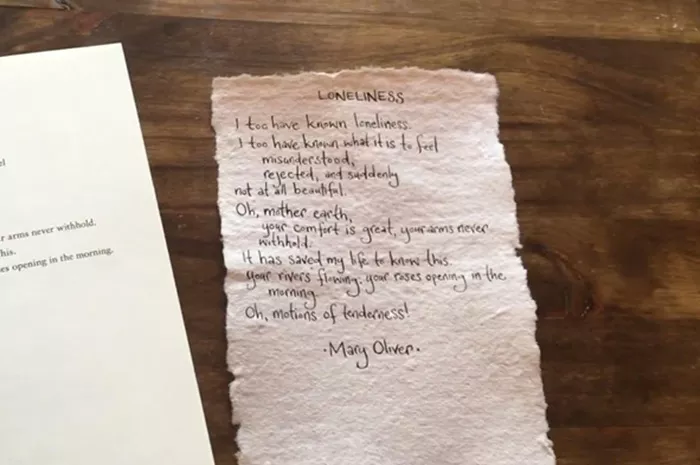Welcome to Poem of the Day – Loneliness by Mary Oliver
Mary Oliver, a beloved American poet, often wrote about nature, solitude, and the human experience. In her poem Loneliness, she gently explores what it means to be alone. This article offers a clear and thoughtful explanation of the poem. We’ll look at its themes, structure, and meaning, using simple language to help every reader connect with her words.
Loneliness Poem
I too have known loneliness.
I too have known what it is to feel
misunderstood,
rejected, and suddenly
not at all beautiful.
Oh, mother earth,
your comfort is great, your arms never withhold.
It has saved my life to know this.
Your rivers flowing, your roses opening in the morning.
Oh, motions of tenderness!
Loneliness Explanation
Summary of the Poem Loneliness
In Loneliness, Mary Oliver describes the feeling of being alone. But she does not see it as only sad or painful. Instead, she shows how loneliness can be a part of growth. It can lead to understanding, peace, and even joy. The poem begins with sorrow but moves toward healing.
Line-by-Line Explanation
Let’s walk through the poem step by step to understand what Oliver is saying.
“When loneliness comes stalking, go into the fields, consider / the orderliness of the world.”
Here, Oliver speaks directly to the reader. She says that when you feel lonely, go outside. Nature, with its quiet order and beauty, can bring calm to the soul. The use of the word “stalking” shows that loneliness can feel like a predator, sneaky and sudden.
“Notice something you have never noticed before…”
She encourages us to look closely at nature. Paying attention to small details can help shift our focus away from pain. It brings us into the present moment. This is where healing begins.
“…like the tambourine sound of the snow-cricket / whose pale green body is no longer than your thumb.”
This beautiful image of a tiny cricket shows how wonder hides in the smallest things. Even in winter, something is singing. Oliver invites us to listen carefully. Loneliness can fade when we connect with the life around us.
“Stare hard at the hummingbird, in the summer rain, shaking / the water-sparks from its wings.”
Now she brings in the hummingbird, a symbol of energy and freedom. Even in the rain, it shines. This shows that beauty and light can still be found in tough times.
“Let loneliness / see the light.”
This is the turning point. Instead of hiding from loneliness, she tells us to let it witness the beauty of the world. Let it be bathed in light. This image is gentle and hopeful.
“Let it go on, / seeing and touching and being moved.”
Here, Oliver gives loneliness a path forward. It should not stay stuck in darkness. It can grow and move through the world, just like the person feeling it can.
“Then it will no longer be lonely, / but will be instead, a friend, / and you will be happy.”
This ending is full of peace. Oliver says that if you walk with loneliness, it may become something else. It may teach you something. It may lead to happiness. This is not a quick fix, but a quiet transformation.
Themes in the Poem
Loneliness as a Teacher: Oliver shows that being alone does not have to be painful. It can teach us about ourselves and the world.
Nature as Comfort: The poem encourages us to turn to nature for healing. The natural world is full of calm, beauty, and wisdom.
Mindfulness and Presence: By noticing small things—like crickets and hummingbirds—we become more present. This helps ease emotional pain.
Hope and Transformation: The poem moves from sorrow to joy. It shows that feelings change. Light can return.
Literary Devices Used
Imagery: Oliver uses strong images (like the snow-cricket and hummingbird) to create a clear picture in the reader’s mind.
Personification: Loneliness is given human traits—it “comes stalking” and can “see the light.”
Simple diction: Her word choice is plain and clear, making the poem easy to understand but still deep.
Conclusion
Loneliness by Mary Oliver is a quiet, powerful poem. It does not deny the pain of being alone. But it also shows that solitude can lead to peace. The natural world becomes a guide and a friend. Oliver reminds us to slow down, look closely, and find meaning in the smallest things.
This poem offers comfort. It says, even when you are lonely, you are not truly alone. The world is still full of life, light, and love.

